 ↪ Description - DIHYDROTACHYSTEROL, DHT
Vitamin D therapy for hypocalcemic conditions is often used with exogenously administeredcalcium products. Refer to the calcium monograph or the references cited below for further information.Dogs: For hypocalcemia secondary to hypoparathyroidism:... ↪ Read more
↪ Description - DIHYDROTACHYSTEROL, DHT
Vitamin D therapy for hypocalcemic conditions is often used with exogenously administeredcalcium products. Refer to the calcium monograph or the references cited below for further information.Dogs: For hypocalcemia secondary to hypoparathyroidism:... ↪ Read more Veterinary Drug Handbook (VDH) is the reference veterinarians turn to when they want an independent source of information on the drugs that are used in veterinary medicine today.
-
 Is veterinary Liniment Gel safe for humans?
Is veterinary Liniment Gel safe for humans? -
 Giving Your Cat A Pill
Giving Your Cat A Pill -
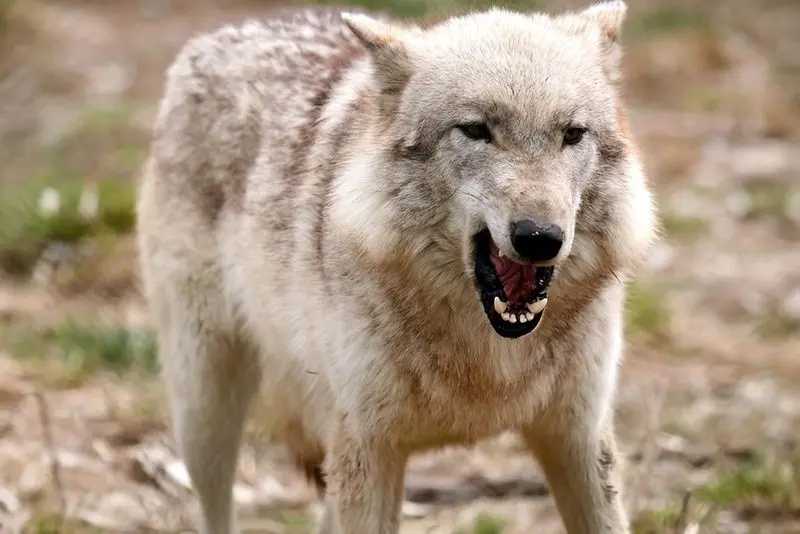 Dog Aggression
Dog Aggression -
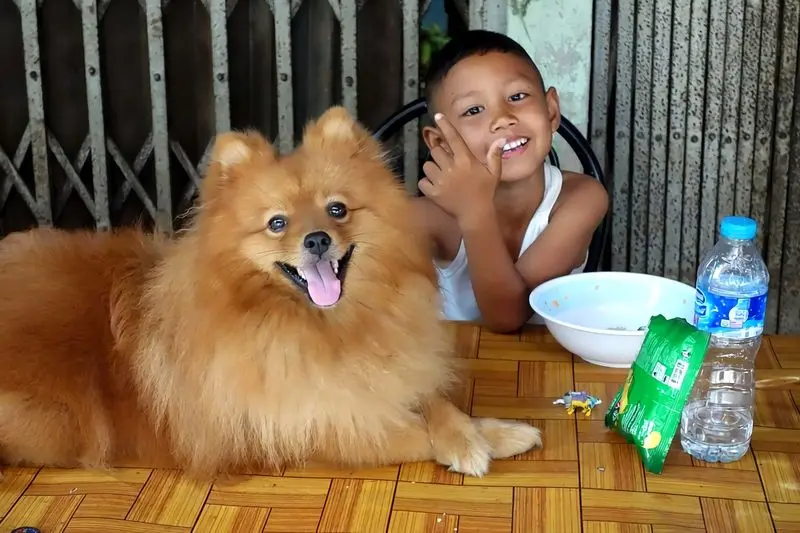 Dogs May Help Boost Infant Health
Dogs May Help Boost Infant Health -
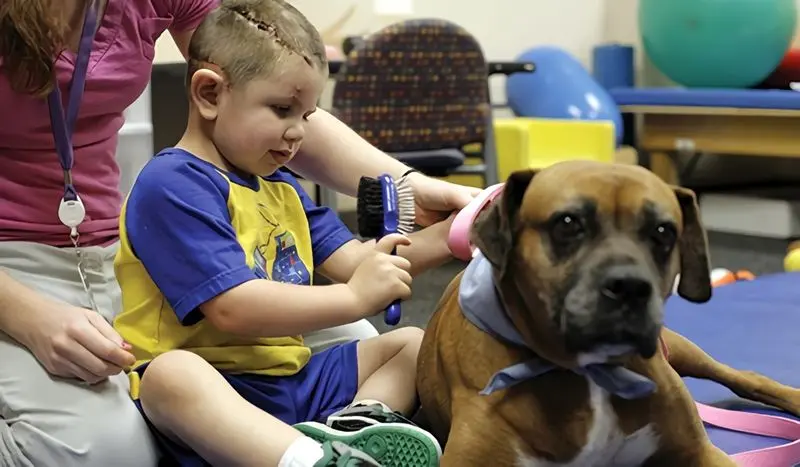 Animal-Assisted Therapy, Veterinary Social Work, & Social Work With People & Pets in Crisis
Animal-Assisted Therapy, Veterinary Social Work, & Social Work With People & Pets in Crisis -
 On-demand veterinary service gives advice on poorly pets
On-demand veterinary service gives advice on poorly pets -
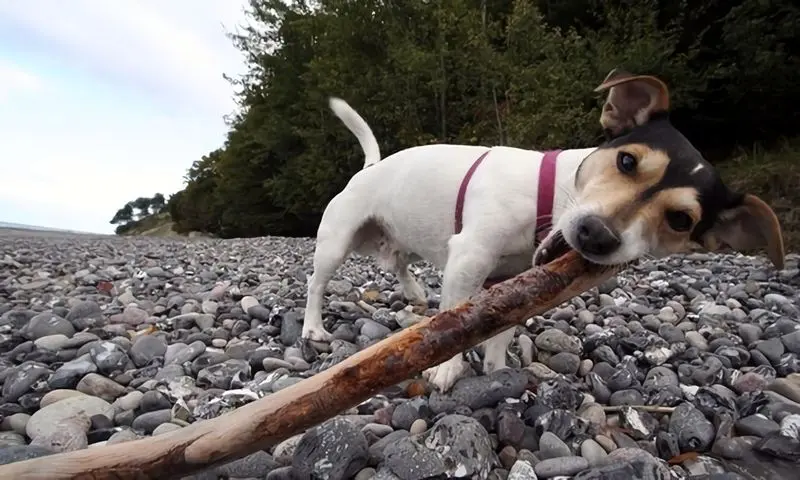 Should we stop throwing sticks for dogs?
Should we stop throwing sticks for dogs? -
 Can breathing in cat hair be harmful?
Can breathing in cat hair be harmful? -
 What does PU/PD mean in veterinary medicine?
What does PU/PD mean in veterinary medicine? -
 Bill calls for ban on sales of dogs, cats in Maine pet stores
Bill calls for ban on sales of dogs, cats in Maine pet stores -
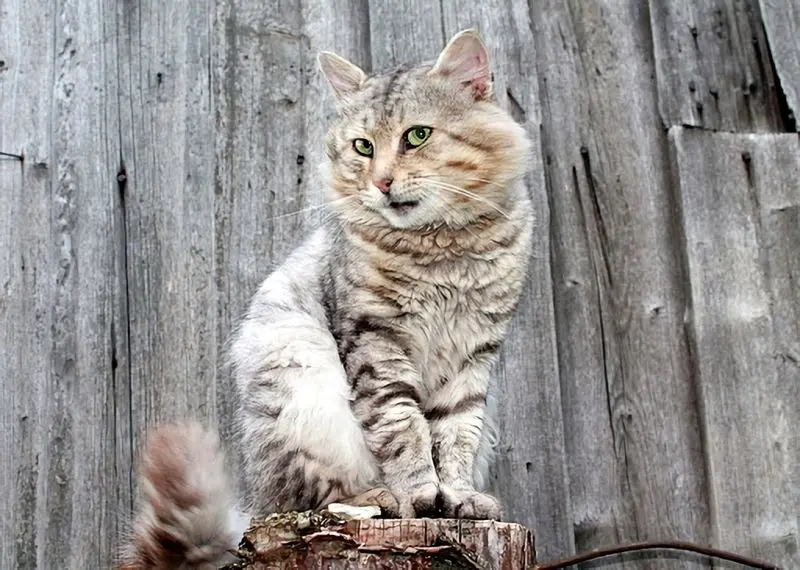 Common Meanings Of Cat Behavior
Common Meanings Of Cat Behavior -
 What does DVM stand for in veterinary?
What does DVM stand for in veterinary? -
 Curing Bad Cat Breath
Curing Bad Cat Breath -
 New Tracking Tool for Pathogen Investigators
New Tracking Tool for Pathogen Investigators -
Can binturongs be kept as pets?
-
 How long do instruments stay sterile after autoclaving veterinary?
How long do instruments stay sterile after autoclaving veterinary?
Doses - DIHYDROTACHYSTEROL, DHT
 ↪ Description - DIHYDROTACHYSTEROL, DHT
Vitamin D therapy for hypocalcemic conditions is often used with exogenously administeredcalcium products. Refer to the calcium monograph or the references cited below for further information.Dogs: For hypocalcemia secondary to hypoparathyroidism:... ↪ Read more
↪ Description - DIHYDROTACHYSTEROL, DHT
Vitamin D therapy for hypocalcemic conditions is often used with exogenously administeredcalcium products. Refer to the calcium monograph or the references cited below for further information.Dogs: For hypocalcemia secondary to hypoparathyroidism:... ↪ Read more DIHYDROTACHYSTEROL, DHT
 ↪ Doses - DIHYDROTACHYSTEROL, DHT
Chemistry - A vitamin D analog, dihydrotachysterol (DHT) occurs as odorless, colorless or whitecrystals, or crystalline white powder. It is practically insoluble in water, sparingly soluble invegetable oils, and soluble in alcohol. Dihydrotachysterol may... ↪ Read more
↪ Doses - DIHYDROTACHYSTEROL, DHT
Chemistry - A vitamin D analog, dihydrotachysterol (DHT) occurs as odorless, colorless or whitecrystals, or crystalline white powder. It is practically insoluble in water, sparingly soluble invegetable oils, and soluble in alcohol. Dihydrotachysterol may... ↪ Read more Doses - DIGOXIN
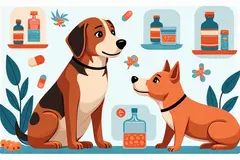 Dogs: a) 0.22 mg/m2 of body surface area bid (Note: body surface area from weight conversionchart may be found in the appnedix) (Kittleson and Knowlen 1986) b) Oral maintenance dose: 0.01 - 0.02 mg/kg divided bid, monitor and adjust dosage prn. Rapid oral digitalization: 0.02 - 0.06 mg/kg divided... ↪ Read more
Dogs: a) 0.22 mg/m2 of body surface area bid (Note: body surface area from weight conversionchart may be found in the appnedix) (Kittleson and Knowlen 1986) b) Oral maintenance dose: 0.01 - 0.02 mg/kg divided bid, monitor and adjust dosage prn. Rapid oral digitalization: 0.02 - 0.06 mg/kg divided... ↪ Read more DIGOXIN
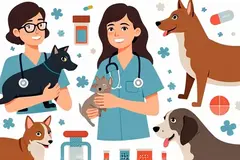 ↪ Doses - DIGOXIN
Chemistry - A cardiac glycoside, digoxin occurs as bitter tasting, clear to white crystals or as white, crystalline powder. It is practically insoluble in water, slightly soluble in diluted alcohol, and veryslightly soluble in 40% propylene glycol solution. Above... ↪ Read more
↪ Doses - DIGOXIN
Chemistry - A cardiac glycoside, digoxin occurs as bitter tasting, clear to white crystals or as white, crystalline powder. It is practically insoluble in water, slightly soluble in diluted alcohol, and veryslightly soluble in 40% propylene glycol solution. Above... ↪ Read more Doses - DIGITOXIN
 Dogs: a) 0.033 - 0.11 mg/kg/day PO divided bid (Kirk 1986) b) 0.03 - 0.04 mg/kg bid to tid (Kittleson 1985a) c) Oral maintenance: 0.04 - 0.1 mg/kg/day divided q8h; Rapid intravenous digitalizationfor atrial arrhythmias: 0.01 - 0.03 mg/kg divided; give 1/2 of above dose IV and wait for30-60 minutes... ↪ Read more
Dogs: a) 0.033 - 0.11 mg/kg/day PO divided bid (Kirk 1986) b) 0.03 - 0.04 mg/kg bid to tid (Kittleson 1985a) c) Oral maintenance: 0.04 - 0.1 mg/kg/day divided q8h; Rapid intravenous digitalizationfor atrial arrhythmias: 0.01 - 0.03 mg/kg divided; give 1/2 of above dose IV and wait for30-60 minutes... ↪ Read more DIGITOXIN
 ↪ Doses - DIGITOXIN
Chemistry - A cardiac glycoside, digitoxin occurs as a bitter tasting, odorless, white to pale buffcolored, microcrystalline powder. It is practically insoluble in water and one gram is soluble inapproximately 150 ml of alcohol.Storage, Stability, Compatibility Digitoxin... ↪ Read more
↪ Doses - DIGITOXIN
Chemistry - A cardiac glycoside, digitoxin occurs as a bitter tasting, odorless, white to pale buffcolored, microcrystalline powder. It is practically insoluble in water and one gram is soluble inapproximately 150 ml of alcohol.Storage, Stability, Compatibility Digitoxin... ↪ Read more Doses - DIETHYLSTILBESTROL, (DES)
 ↪ Description - DIETHYLSTILBESTROL, (DES)
Dogs: For susceptible infections: a) 5 mg/kg - 10 mg/kg once daily PO for 2 - 3 days beyond the cessation of clinical signs to a maximum of 30 days therapy. (Package Insert¯Dicural®) Monitoring Parameters/Client Information - Efficacy is... ↪ Read more
↪ Description - DIETHYLSTILBESTROL, (DES)
Dogs: For susceptible infections: a) 5 mg/kg - 10 mg/kg once daily PO for 2 - 3 days beyond the cessation of clinical signs to a maximum of 30 days therapy. (Package Insert¯Dicural®) Monitoring Parameters/Client Information - Efficacy is... ↪ Read more Doses - DIETHYLSTILBESTROL, (DES)
 ↪ Description - DIETHYLSTILBESTROL, (DES)
Dogs: For pregnancy avoidance after mismating: a) 0.1 - 1 mg PO for 5 days if animal is presented 24-48 hours after coitus. If animal ispresented later than 5 days post-coitus: 1 - 2 mg PO for 5 days after ECP therapy(0.044 mg/kg (ECP) IM once... ↪ Read more
↪ Description - DIETHYLSTILBESTROL, (DES)
Dogs: For pregnancy avoidance after mismating: a) 0.1 - 1 mg PO for 5 days if animal is presented 24-48 hours after coitus. If animal ispresented later than 5 days post-coitus: 1 - 2 mg PO for 5 days after ECP therapy(0.044 mg/kg (ECP) IM once... ↪ Read more DIETHYLSTILBESTROL, (DES)
 ↪ Doses - DIETHYLSTILBESTROL, (DES)
Chemistry - A synthetic nonsteroidal estrogen agent, diethylstilbestrol occurs as an odorless, white, crystalline powder with a melting range of 169°-175°C. It is practically insoluble in water;soluble in alcohol or fatty oils.... ↪ Read more
↪ Doses - DIETHYLSTILBESTROL, (DES)
Chemistry - A synthetic nonsteroidal estrogen agent, diethylstilbestrol occurs as an odorless, white, crystalline powder with a melting range of 169°-175°C. It is practically insoluble in water;soluble in alcohol or fatty oils.... ↪ Read more Doses - DIETHYLCARBAMAZINE CITRATE
 ↪ Description - DIETHYLCARBAMAZINE CITRATE
Dogs: For heartworm prophylaxis: a) 6.6 mg/kg PO once a day preceding infection and for 60 days following last exposureto mosquitos. In dogs who become microfilaremic while on DEC, may continue, but donot interrupt daily DEC therapy. (Knight 1988)... ↪ Read more
↪ Description - DIETHYLCARBAMAZINE CITRATE
Dogs: For heartworm prophylaxis: a) 6.6 mg/kg PO once a day preceding infection and for 60 days following last exposureto mosquitos. In dogs who become microfilaremic while on DEC, may continue, but donot interrupt daily DEC therapy. (Knight 1988)... ↪ Read more DIETHYLCARBAMAZINE CITRATE
 ↪ Doses - DIETHYLCARBAMAZINE CITRATE
Chemistry - A piperazine derivative, diethylcarbamazine citrate (DEC) occurs as a white, slightlyhygroscopic, crystalline powder that is either odorless or has a slight odor and a melting point ofapproximately 138°C. It is very soluble in water and... ↪ Read more
↪ Doses - DIETHYLCARBAMAZINE CITRATE
Chemistry - A piperazine derivative, diethylcarbamazine citrate (DEC) occurs as a white, slightlyhygroscopic, crystalline powder that is either odorless or has a slight odor and a melting point ofapproximately 138°C. It is very soluble in water and... ↪ Read more Doses - Information.
 ↪ Description - Information.
Dogs: For susceptible infections: a) 11 - 25 mg/kg PO q8h (Papich 1988) b) 10 - 50 mg/kg q8h PO (Greene 1984) c) For resistant Staph. infections: 10 - 20 mg/kg PO tid-qid (Morgan 1988) d) 10 - 25 mg/kg PO q8h (Ford and Aronson 1985) e) 27.5 - 33 mg/kg PO q8h... ↪ Read more
↪ Description - Information.
Dogs: For susceptible infections: a) 11 - 25 mg/kg PO q8h (Papich 1988) b) 10 - 50 mg/kg q8h PO (Greene 1984) c) For resistant Staph. infections: 10 - 20 mg/kg PO tid-qid (Morgan 1988) d) 10 - 25 mg/kg PO q8h (Ford and Aronson 1985) e) 27.5 - 33 mg/kg PO q8h... ↪ Read more Popular Diagnoses
Packed cell volume (PCV, hematocrit) Reflex ovulator Mucolytic Microfilaricide Bronchodilator Hematocrit Glucocorticoid Monoamine oxidase inhibitor (MAOI) ↪ All veterinary diagnoseOther Diagnoses
H2 antagonist Head pressing Heart block Heartworm Heinz body anemia Hematocrit Hematoma HemolyticPopular Veterinary Clinics
VCA Welborn Animal Hospital, 7860 Washington Avenue Kansas City, KS 66112 USA MedVet Columbus, 300 East Wilson Bridge Road, Worthington, OH Rutland Veterinary Clinic & Surgical Center, 90 East Pittsford Road, Rutland, VT VCA Paradise Valley Emergency Animal Hospital, 6969 East Shea Boulevard Suite 150 Scottsdale, AZ 85254 USA Connecticut Veterinary Center & Pet ER, 470 Oakwood Ave West Hartford, CT 06110 USA Norway Veterinary Hospital, 10 Main St P.O. Box 273 Norway, ME 04268 USA Craig Road Animal Hospital, 5051 West Craig Road, Las Vegas, NV Abri Veterinary Hospital Inc, 1449 Trademart Boulevard Winston-Salem, NC 27127 USA ↪ All veterinary clinicsOther Veterinary Clinics
Bayshore Veterinary Clinic PC, 2414 10th Street Menominee, MI 49858 USA Belleville Animal Hospital, 437 Sumpter Road Belleville, MI 48111 USA BluePearl Pet Hospital, 2314 West Michigan Street Duluth, MN 55806 USA ALL PAWS ANIMAL HOSPITAL, 5225 EXCELSIOR BLVD ST LOUIS PARK, MN 55416 USA, Minneapolis AMVET Animal Hospital, 15670 90th St NE Otsego, MN 55330 USA Animal Emergency & Referral Center of Minnesota, 1542 7th Street West, Saint Paul, MN VCA Animal Wellness Center of Maple Grove, 7000 East Fish Lake Road, Maple Grove, MN Arden Shoreview Animal Hospital, 1261 West County Road E Arden Hills, MN 55112 USAPopular Drugs
DOXYLAMINE SUCCINATE Doses - PENICILLIN V POTASSIUM Doses - METHYLPREDNISOLONE, METHYLPREDNISOLONE ACETATE, METHYLPREDNISOLONE SODIUM SUCCINATE ACEPROMAZINE MALEATE Doses - PREDNISOLONE, PREDNISOLONE SODIUM SUCCINATE, PREDNISOLONE ACETATE, PREDNISONE Doses - FURAZOLIDONE Doses - FERROUS SULFATE Doses - LEVAMISOLE ↪ All veterinary drugOther Drugs
Monodyne Isopropyl Alcohol 99% Isopropyl Alcohol 70% Pentadyne Kaolin Pectin Suspension Prodyne Durvet 70% Alcohol Solution Kaolin Pectin SuspensionPopular Terms
Subalbinotic Steatis Uteroverdin Paradoxical CSF acidosis Figure of 8 suture pattern Nerve root signature Ovariohysterectomy Abrev OVH Signalment ↪ All veterinary termOther Terms
Ureterectomy Ureterolith Ureteroplasty Ureterostenosis Urethritis Urethrostomy Depauperatum Depot fatveterinary-help.com
© 2011-2025 Veterinary Clinics, Diagnoses, Terms and Drug Handbook Online

